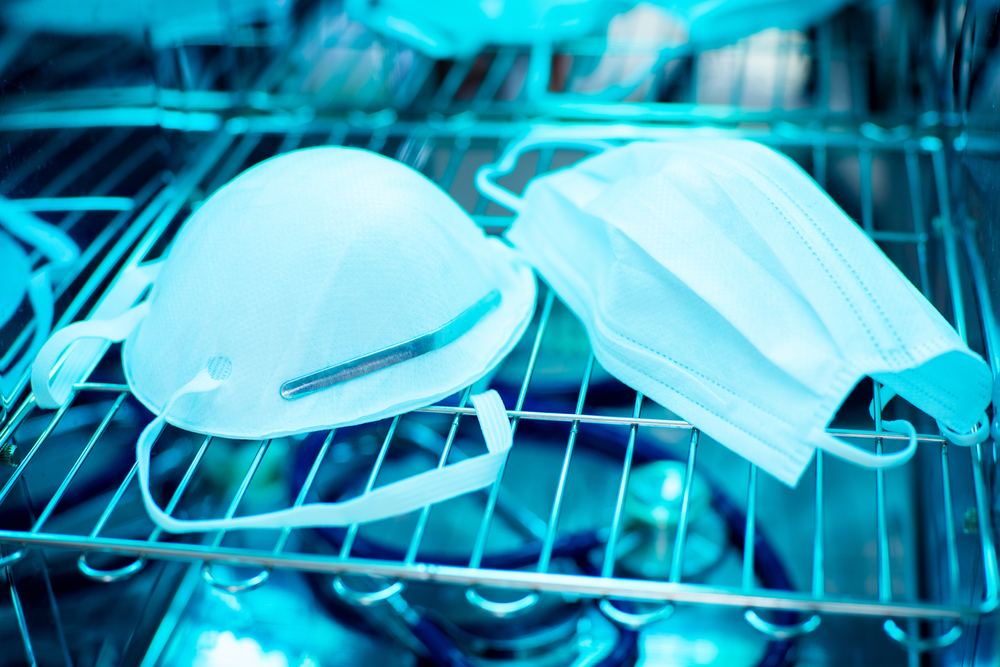How evolving disinfection tech can optimise patient care and secure a more sustainable healthcare sector

Co-Founder of UV Smart, Daan Hoek, outlines the importance of UV-C light to infection control, and how its implementation can support the government’s ambitions to reduce pressure on NHS hospitals.
Before it was elected, the new Labour government pledged to build an NHS that was ‘fit for the future’.
As part of that bold promise, the party said it would deliver an extra two million NHS operations, scans and appointments every year; put an emphasis on patient safety; and take action to drive innovation and new technologies.
In his first few days in office, Health Secretary Wes Streeting also ordered an independent probe that would look at the performance of the service.
This investigation comes as Labour inherits sky-high waiting lists from the Conservatives, with new figures revealing an estimated 6.38 million patients were waiting for 7.6 million treatments at the end of May. It also comes as the clock ticks down on ambitious NHS plans to become the world’s first net zero national health service.
While it’s by no means a silver bullet that will fix all challenges plaguing the UK healthcare sector, emerging UV-C disinfection technology could play a significant role in optimising patient care through effective infection control, while also helping the NHS meet its sustainability goals and free up staff to focus on people rather than lengthy decontamination procedures.
What is UV-C light and how can it support infection control?
UV-C light is a type of ultraviolet light which destroys the DNA or RNA of microorganisms – including bacteria, viruses and fungi. It is also residue-free, non-contact, doesn’t produce any harmful by-products and doesn’t require special handling.
While traditional decontamination strategies can be effective, they often rely on harsh chemicals and come with the potential of human error. There are also concerns over bacterial resistance to these disinfection methods.
UV-C disinfection chambers, on the other hand, ensure a high level of consistency, and the lack of chemicals also means there is less wear and tear on medical equipment.
A 2023 point prevalence survey from the UK Health Security Agency reported that more than four million people acquire a healthcare-associated infection every year in Europe, an estimated 37,000 of whom die as a direct result.
Protecting patients and the planet
The healthcare sector is not immune to environmental challenges, being responsible for an estimated 4.4 per cent of global CO2 emissions – it also consumes a huge amount of resources and, in many cases, is heavily reliant on single-use items.
Recognising its responsibility to remedy this issue, the NHS has laid out ambitious plans to improve on sustainability and become the world’s first net zero national health service by 2040 – but there is still a long road ahead before it can reach that target.
Following a successful trial in the UK, it has been estimated that the NHS could save more than 1,200 tonnes of carbon if next-generation UV-C disinfection technology was adopted in just one department across each of its more than 200 trusts.
It is also predicted that the move could save the health service upwards of 215,000 litres of chemicals, one million litres of water and more than 200 million watts of energy.
These projections are for a 12-month period and are based on a pilot of a UV-C disinfection chamber in a department in a South of England hospital. It is also believed that the potential resource savings could be significantly higher depending on demand and similar environmental benefits have been seen in several pilots in Europe.
UV-C disinfection technology can also help reduce the reliance on unnecessary single-use medical equipment, which poses a unique threat to the environment, by providing an efficient and effective decontamination process for reusable alternatives.
There are growing calls for the healthcare sector to minimise the use single-use items, including from senior Nurse and Head of Clinical Products Management at Black Country Alliance, Claire Nash, who recently said we must “move away from this ridiculous throwaway society, both at home and in the NHS”.
Helping lift the ‘wait’ from the shoulders of the healthcare sector
The latest reports show hospital waiting lists have risen for the second month in a row, with an estimated 6.38 million patients waiting for around 7.6 million treatments at the end of May – in more than 300,000 cases, patients have been waiting for longer than a year.
These alarming figures are lower than the 7.77 million high reported for last September, but they highlight the immense scale of this challenge. One strategy to alleviate the burden on staff and help ensure patients are seen quicker is by using evolving disinfection strategies.
The same NHS trial that revealed the resource savings of UV-C disinfection chambers also showed that this tech can ‘considerably’ shorten the decontamination process of medical equipment to just 60 seconds.
It also found that the tech had increased capacity, ‘reduced waiting times for patients’ and drastically cut the amount of equipment that needed to be repaired due to damage from chemicals or transportation – meaning fewer clinics had to be cancelled as a result of broken equipment.
Fit for the Future
The nation is watching closely to see whether Labour comes good on its promise to ‘get a grip’ on the waiting lists and modernise the NHS. If the newly-elected government is to achieve its bold promise of building a service that is ‘fit for the future’, it must take seriously the potential of evolving technology – including next-generation UV-C disinfection.
